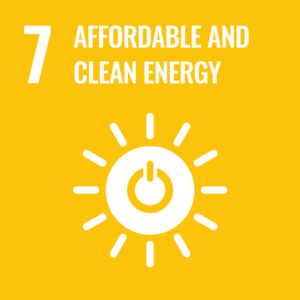 The Italian Energy Market.
The Italian Energy Market.
Exploring Sustainable And Renewable Energy Sources.
The Italian energy market is constantly evolving, striving to become more sustainable and reduce its reliance on traditional fossil fuels. In this blog article, we will explore the Italian energy market in greater detail, including the various forms of renewable energy.
Introduction to the Italian Energy Market
The Italian energy market remains an important and complex sector within the European Union, and the Italian government is working to guarantee a secure and sustainable energy future for the country by developing a diverse mix of renewable and sustainable energy sources.
According to the latest available data from the Italian Ministry of Economic Development, Italy’s total installed renewable energy capacity is 114.7 TWh. In detail, Hydropower is the most significant contributor at 44.7 TWh, followed by solar energy at 25.0 TWh and Wind power at 20.8 TWh. Moreover, Italy has significant geothermal and biomass resources.
Italy has set a target to generate 30% of its total power from renewable sources by 2030, as part of its efforts to increase the share of renewable energy in the country’s electricity mix. Given that, the government has implemented various policies and incentives to support this goal. For example, it is introducing auctions for new renewable projects, subsidies, and green certificates.
In response to the Fukushima nuclear disaster in 2011, Italy decided to phase out nuclear power. Italian nuclear power plants have been closed and replaced with a mix of renewable energy sources and natural gas-fired power plants. This transition has led to significant investment in new infrastructure, creating opportunities for companies investing in the energy sector.
Overview of Italy’s Energy Use
- Italy’s energy use is among the highest in Europe, with a total demand of about 318 TWh in 2021.
- Natural gas remains the largest source of energy in Italy, accounting for about 41.8% of total demand in 2021.
- Oil is the second largest source of energy (32,9%), but its share is declining as Italy moves away from this fossil fuel.
- Renewables accounted for 19.5% of Italy’s gross final energy production in 2021.
- Hydropower is still Italy’s most dominant renewable energy source. It accounts for 39% of the total renewable energy production.
- Solar photovoltaics is the second-largest contributor. It makes up 21.9% of the renewable energy mix, followed by wind (17%), bioenergy (16%), and geothermal (5%).
For more detailed information on Italy’s energy use and sources in 2021, you can refer to theannual relation of the MISE.
Benefits and Challenges of Sustainability and Renewable Energy in Italy
The Italian energy market is in a period of change as the country looks to increase its use of sustainable and renewable energy sources. This shift comes with both benefits and challenges, which are discussed below.
Benefits:
- Increased energy security. By diversifying its energy mix, Italy will become less reliant on imported fossil fuels and therefore more energy secure.
- Improved environmental sustainability. Reducing reliance on fossil fuels will help Italy meet its emissions reduction targets and improve air quality.
- Economic benefits. The growth of the renewable energy sector will create new jobs and bring investment into the country.
Challenges:
- High upfront costs. The initial investment required to develop renewable energy infrastructure can be costly.
- Intermittency issues. Renewable energy sources such as wind and solar are not always available, meaning backup power sources are necessary.
- Social acceptability. Some communities may resist the development of renewable energy projects. Especially if they are located near potential sites for wind or solar farms.
The Role Of Government In Promoting Sustainability And Renewable Energy
The Italian government has been taking steps to promote sustainable and renewable energy. In 2019, they approved the National Energy and Climate Plan (PNIEC) for 2021-2030. The Plan outlines its goals for reducing greenhouse gas emissions and achieving a 30% share of renewable energy in Italy’s final energy consumption by 2030. Given that, the government has introduced financial incentives for renewable energy systems, tax credits and feed-in tariffs. Moreover, they invested in research and development of new technologies. Energy efficiency standards have also been introduced for buildings and appliances. Moreover, they have launched initiatives to promote energy-efficient practices in industry and transport.
Investment Opportunities In The Italian Energy Market
In recent years, the Italian energy market has shifted towards sustainable and renewable energy sources. Investment in these sectors is growing as the country looks to reduce its reliance on imported fossil fuels.
The Italian government has set ambitious targets for developing renewable energy. They aim to reach a total of 70 GW of installed capacity by 2030. Solar, wind and hydropower are all being promoted as part of this effort. Therefore, several large-scale solar and wind farms are already in operation, and further projects are in the pipeline.
Indeed, investors in the renewable energy sector can take advantage of several incentives, including tax breaks and feed-in tariffs. The Italian market offers good potential for both domestic and foreign investors.
Leading the Way: Italy’s Ambitious Plan for a Sustainable Energy Future
Thanks to its ambitious plan for green energy production and growing commitment to meeting carbon emission targets, the Italian energy market is well-placed to explore sustainable and renewable energy sources. This puts the country at the forefront of the global movement towards a more sustainable future. Although there are still some challenges to overcome, Italy is already making significant progress towards a greener future and can serve as a role model for other countries seeking to do the same.
Don’t risk missing important developments. Get the latest insights on the Italian Energy market. Contact us now to learn more and stay ahead of the curve.







